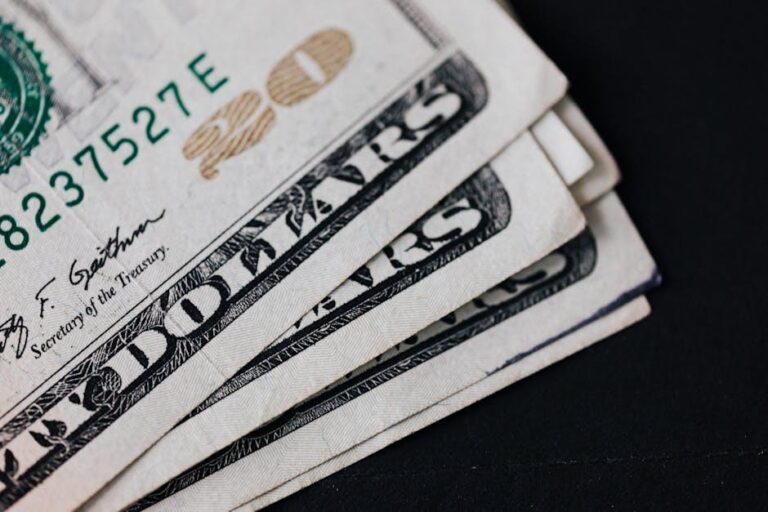Let’s face it, life can be pretty unpredictable. One minute you’re cruising along, and the next, an unexpected car repair or medical bill can throw your finances—and your peace of mind—into disarray. That’s where a stress-saving account comes in. Think of it as your financial superhero, ready to swoop in and save the day when the going gets tough. In this article, we’ll explore how building financial buffers can help ease the mental strain that comes with life’s little surprises, making your journey a bit smoother and a lot more worry-free. Curious about how to start? Let’s dive in!
Understanding the Stress-Saving Account Concept
Imagine having a safety net specifically designed to catch you financially when unexpected expenses pop up. That’s essentially what a stress-saving account is all about. It acts as a buffer, giving you peace of mind by reducing the worries that come with sudden financial hits. This could be anything from medical emergencies to urgent home repairs. The key idea is to have a stash of money set aside, so when life throws you a curveball, you’re ready to catch it without breaking a sweat.
Building this financial buffer doesn’t have to be complicated. Start with small, manageable contributions and increase them whenever possible. Here’s a quick breakdown to get you started:
- Set a Goal: Determine the amount you need for a basic emergency fund. Experts suggest starting with $1,000.
- Automate Savings: Use your bank’s auto-transfer feature to move a portion of your income into this account regularly.
- Boost with Bonuses: Whenever you get a tax refund, bonus, or windfall, add a portion to your stress-saving account.
| Step | Action |
|---|---|
| 1 | Set an initial goal of $1,000 |
| 2 | Automate a small, regular saving amount |
| 3 | Contribute windfalls like tax refunds |

Simple Steps to Start Your Financial Buffer
Starting your financial buffer doesn’t have to be complicated. Here are a few simple steps you can take to build one up quickly:
- Set a Savings Goal: Determine how much you want to save. A good rule of thumb is to aim for a buffer that covers three to six months of expenses.
- Start Small: Consider setting aside a portion of your income each month, even if it’s just a small amount. Every little bit helps and can accumulate over time.
- Automate Your Savings: Use your bank’s auto-transfer feature to move money into your savings account regularly. This makes saving effortless and consistent.
Next, let’s make sure your buffer grows steadily:
- Cut Unnecessary Expenses: Review your spending habits and see where you can cut back. Cancel subscriptions you don’t use and opt for cost-effective alternatives when possible.
- Earn Extra Income: Explore side gigs or part-time work that can help you boost your savings.
Source Potential Earnings Freelancing $200/month Online Tutoring $150/month Garage Sales $100/month - Prioritize Your Buffer: Treat your financial buffer as a priority. Whenever you receive extra money, such as a tax refund or bonus, consider adding it to your buffer.

Maintaining and Growing Your Financial Cushion
Building a financial cushion isn’t a one-time effort; it’s ongoing. Start by setting realistic savings goals—maybe it’s an extra $20 a week. Gradually, this builds up, and before you know it, you’ll have a comfortable safety net. Here are some ways to make sure you’re growing that buffer continuously:
- Automate your savings: Set up automatic transfers from your checking to your savings account.
- Cut unnecessary expenses: Little things like daily coffees add up. Consider making them a treat rather than a norm.
- Use windfalls smartly: Bonuses or unexpected money should primarily go into your savings.
Review and adjust your budget regularly. Changes in your life—like a raise or new expenses—mean adjusting your plan. A budget isn’t a set-it-and-forget-it tool. Use it actively to keep your financial journey on track:
Sample Budget Review Table:
| Expense Category | Old Budget | New Budget |
|---|---|---|
| Groceries | $300 | $280 |
| Entertainment | $150 | $100 |
| Savings | $200 | $220 |

How a Financial Buffer Can Improve Your Well-Being
Having a bit of extra money set aside can do wonders for your peace of mind. Imagine facing unexpected expenses, like your car breaking down or a sudden medical bill, without panicking. A financial buffer lets you handle these surprises calmly. Here’s how it helps:
- Reduces anxiety: Knowing you have a safety net makes everyday worries feel less overwhelming.
- Encourages better decision-making: You can think more clearly and make smarter choices when not stressed about finances.
- Promotes better sleep: Less financial stress often leads to better sleep quality, which boosts overall well-being.
Take a look at this example to see how a financial buffer can impact different areas of your life:
| Without Buffer | With Buffer |
|---|---|
| Worry about unexpected bills | Feel prepared for surprises |
| Limited leisure activities due to cost concerns | Able to enjoy more leisure activities |
| Difficulty planning for future goals | More confidence in future planning |
Q&A
### Q&A:
Q: What is a stress-saving account?
A: A stress-saving account is essentially a financial buffer—money stashed away specifically to help you handle unexpected expenses or financial emergencies. It’s all about giving yourself some breathing room and reducing the anxiety that can come with financial uncertainty.
Q: How is this different from a regular savings account?
A: Though similar, a stress-saving account has a distinct purpose. While a regular savings account might be for big goals like buying a house or going on vacation, a stress-saving account is more about peace of mind. It’s your go-to fund for life’s curveballs, like sudden car repairs, medical issues, or job loss.
Q: Why is it important to have a stress-saving account?
A: Life is unpredictable. Having a cushion can dramatically reduce the emotional and mental stress that comes with unexpected financial hits. Knowing you have a safety net can make challenges a little less daunting and help you stay focused and calm in other areas of your life.
Q: How much should I aim to save in my stress-saving account?
A: The ideal amount can vary, but a common recommendation is to save three to six months’ worth of living expenses. This ensures that if something major comes up, you’ve got enough to cover your essentials while you get back on your feet.
Q: What are some tips for building a stress-saving account?
A: Start by setting small, achievable goals. You can automate transfers from your checking account to make saving effortless. Cut down on unnecessary expenses and try to channel any extra income, like bonuses or tax refunds, directly into your stress-saving account.
Q: Are there any psychological benefits to having a stress-saving account?
A: Absolutely. Knowing that you have a financial safety net can significantly decrease stress and anxiety levels. It promotes a sense of security and can improve overall mental well-being. Plus, it can help you make better decisions because you’re less likely to act out of panic.
Q: What if I have debt? Should I still be putting money into a stress-saving account?
A: It’s a balancing act. While it’s important to pay down high-interest debt, having a small stress-saving buffer can prevent you from going further into debt when emergencies arise. Even setting aside a modest amount, like $500 to $1,000, can make a big difference.
Q: Can a stress-saving account help with other types of stress?
A: Yes! Financial worries often spill over into other areas of life, affecting relationships, job performance, and overall health. By easing financial stress, a stress-saving account can help you feel more balanced and in control, which can improve your quality of life.
Q: What’s a practical first step to get started?
A: Open a separate savings account solely for this purpose, if you don’t have one already. Start with whatever you can afford to set aside, even if it’s just $10 a week. The important part is to make it a habit and watch your safety net grow over time.
Q: Is there a downside to having a stress-saving account?
A: Not really. The only potential downside is if the money sits idle and you miss out on other investment opportunities, but the peace of mind it offers is often well worth the trade-off. If you do find your account growing substantial, you can always reassess and invest a portion of it.
Building a stress-saving account takes time, but the effort can pay off in more ways than one. It’s about more than just money—it’s an investment in your mental peace and overall well-being. So, take that first step toward easing your financial stress today!
Closing Remarks
And there you have it! Building a financial buffer might not solve all of life’s worries, but it can certainly take a load off your mind. By setting aside funds and planning for the unexpected, you’re not just investing in your future; you’re investing in your peace of mind. So, start small, stay consistent, and watch as your stress levels dip along with your growing savings. Who knew a little cushion of cash could make such a big difference?
Thanks for sticking with us through this article, and here’s to a less stressful, more financially secure future for us all!


